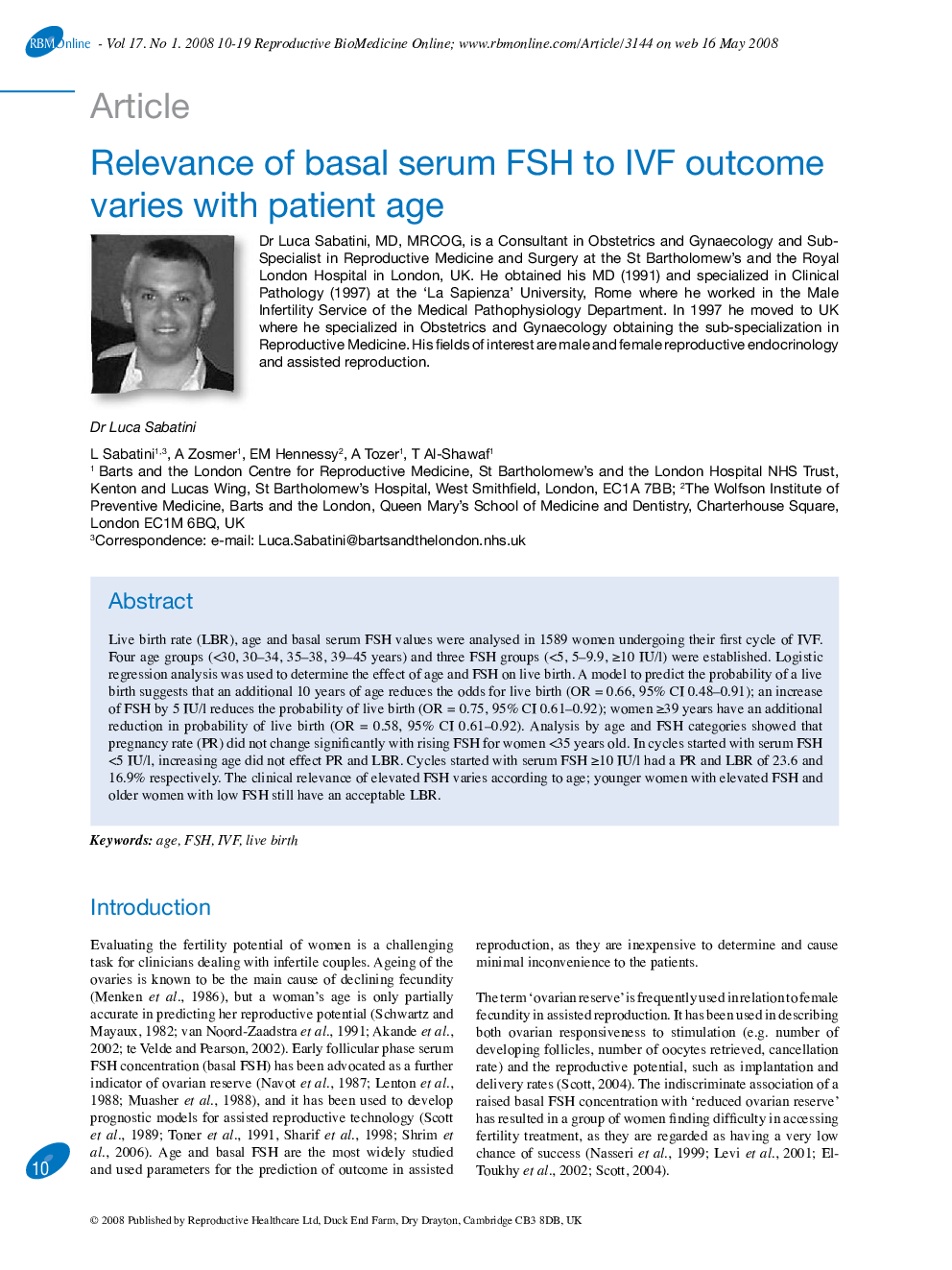| Article ID | Journal | Published Year | Pages | File Type |
|---|---|---|---|---|
| 3972398 | Reproductive BioMedicine Online | 2008 | 10 Pages |
Live birth rate (LBR), age and basal serum FSH values were analysed in 1589 women undergoing their first cycle of IVF. Four age groups (<30, 30–34, 35–38, 39–45 years) and three FSH groups (<5, 5–9.9, >10 IU/l) were established. Logistic regression analysis was used to determine the effect of age and FSH on live birth. A model to predict the probability of a live birth suggests that an additional 10 years of age reduces the odds for live birth (OR = 0.66, 95% CI 0.48–0.91); an increase of FSH by 5 IU/l reduces the probability of live birth (OR = 0.75, 95% CI 0.61–0.92); women >39 years have an additional reduction in probability of live birth (OR = 0.58, 95% CI 0.61–0.92). Analysis by age and FSH categories showed that pregnancy rate (PR) did not change significantly with rising FSH for women <35 years old. In cycles started with serum FSH <5 IU/l, increasing age did not effect PR and LBR. Cycles started with serum FSH >10 IU/l had a PR and LBR of 23.6 and 16.9% respectively. The clinical relevance of elevated FSH varies according to age; younger women with elevated FSH and older women with low FSH still have an acceptable LBR.
